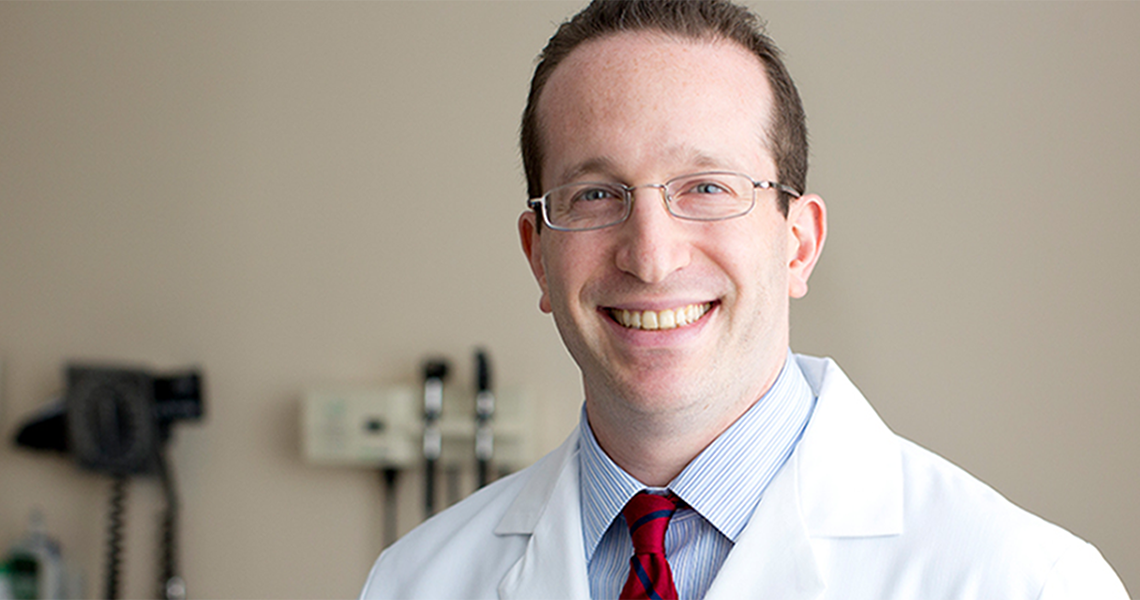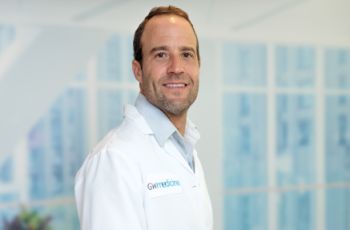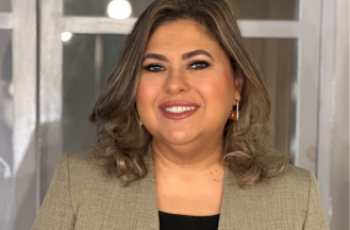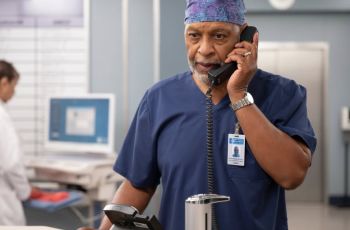Adam Friedman, MD, is not your typical dermatologist. A self-described Renaissance mind, he thrives on intellectual curiosity, clinical complexity, and the ever-changing landscape of modern medicine. Here, he shares how a winding career path, early morning workouts, off-label drug ingenuity, and a lifelong love of teaching have shaped his journey — and why no two days are ever the same.

What’s your story?
I’d describe my story as a multi-volume series. I’ve always been drawn to diversity — diversity of thought, experience, and opportunity. My career reflects that. I wear many hats in dermatology and beyond, whether it’s clinical care, research, education, or innovation. I’ve never wanted to be pigeonholed. That might be my ADHD talking, but I thrive when I can be curious and involved in a range of things. I don’t want to be a jack of all trades — I aim to be an expert in many.
My clinical work spans from acne to complex medical dermatology. In research, I focus heavily on drug development and delivery platforms, which let me collaborate in areas like oncology, infectious disease, and rheumatology. Each day is different, and that’s what drives me. It’s also how I was raised. My father is a true Renaissance man, and a lot of my research is still in collaboration with him. I guess I wanted to emulate that.
It’s funny because I actually wanted to be an actor. Theatre, movies, TV. All the fun stuff. As a child, I even had an agent. But when my parents refused to sign an absurd contract from the agency that said they could be billed for lost revenue if I didn’t go to a certain number auditions, they sat me down and said, “Adam, we just can’t do this, and I apparently said, “Well, I guess I’ll be a doctor then.” And here I am.
What gets you out of bed in the morning? What motivates you?
Literally, I get up at 3 a.m. — part gift, part curse. But what gets me moving is gratitude for where I am. My journey wasn’t a straight path. I didn’t match into dermatology the first time. That loss could’ve broken me, but instead it shaped me. I live by the idea that you never lose: you either learn or win.
Dermatology offers endless opportunities to learn and grow. With over 3,000 skin, hair, and nail diseases, the intellectual and practical challenges are constant. I’m especially motivated by how dermatology allows for creativity in treatment. I’ve built much of my career on the thoughtful use of off-label medications: repurposing drugs designed for other conditions to help patients with few or no approved options. It requires a deep understanding of pharmacology and disease mechanisms, but when it works, it’s incredibly rewarding. It also laid the foundation for some of my research and drug development work today.
The field is evolving rapidly, especially with personalized medicine and targeted therapies. Each day is an adventure, and I genuinely wake up excited. I also work out early. One hour of work, then 45 minutes of exercise. That helps set the tone for the day and fuels that energy to take on whatever comes next.
What is that one book that has influenced you the most?
Arrowsmith by Sinclair Lewis. It’s about a physician navigating the early days of medicine in America. I honestly don’t remember all the details — it’s been a while — but I vividly remember how it made me feel. I read it in college, already knowing I wanted to be a doctor, and this book solidified my goals for me.
Reading Arrowsmith reminded me of the privilege it is to practice medicine, especially now. We’re living in a golden age of innovation, particularly in dermatology, where diseases that once had no treatments now have highly effective options. That book captured the spirit of resilience and discovery that still inspires me today.
You and your work have made a difference for many patients. Is there one patient who made a difference for you?
There are so many, but one particularly stands out. Early in my career, I treated a patient with prurigo nodularis, a debilitating, intensely itchy skin disease that was often misunderstood. Back then, we blamed patients for scratching too much. This woman was covered in painful, open nodules. I saw her every few weeks, injecting steroids, trying off-label medications, doing everything I could. The treatments were painful, and I could feel her suffering. Despite my efforts, the results were limited, and that failure stuck with me.
But that patient ignited my curiosity. I wanted a more thorough understanding of the disease and to find better treatments. Eventually, I helped lead a clinical study site to truly characterize the disease, which led to the development of several new drugs for prurigo nodularis, which are now FDA-approved. I think about her every time I see a new patient with this condition.
Another patient later in my career told me she just wanted to wear a dress to her son’s bar mitzvah, but her arms and legs were too affected by the disease. I treated her with one of those new therapies, and she did wear a dress that day. That moment stays with me. It’s a reminder of how visible and burdensome skin disease can be, and how meaningful effective care is.
What is the most interesting thing we should know about you?
Here’s one: my father is a Tai Chi master. I grew up in a house filled with martial arts and swords. Of course, being a stubborn kid, I didn’t want to learn from him — but I did study Kung Fu and became a black belt in high school. I even taught Kung Fu at a Buddhist monastery in New Jersey. That was a formative experience — especially when the parents at the final performance looked at me like, “Who is this guy teaching our kids?”
I’m also a runner. My wife and I ran the Paris Marathon when she was a month pregnant with our son, who is 13 now. We even chose our OB based on whether she approved of us running together. And now our son is a runner and an athlete, too.
Another fun fact: I love public speaking. If I could do anything, I’d travel the world teaching. Some say, “You’re a doctor, not a teacher,” but I believe those roles are one and the same. The most critical part of a patient visit isn’t just diagnosis—it’s the connection, the explanation, the partnership. That’s also why I’ve created innovative educational programs and conferences here at GW. I love turning complex topics into engaging experiences, whether for students, clinicians, or patients.



